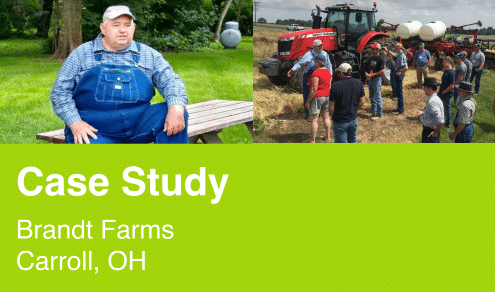I'm sorry, but I struggle with the idea of a feedlot being a more environmental way to feed cattle than a having them doing what they do naturally, turning grass, legumes and forbs into red meat.
None of these studies take animal husbandry or soil health into affect. If you were a cow would you want to me shoved into a
feedlot in Kansas on a 100° degree day with no shade or would you rather be grazing a silvopasture where there's trees for shade ? Most of my customers are my customers because they want animals that are treated with respect and kindness and just not seen as a commodity. I guarantee any rancher or cattle men treats his cattle a hell of a lot better than any feed lot ( Cargill, JBS, Tyson) operator does.
Concerning soil health, I read the article about Dave Brandt ( RIP ) that
@begreen posted and that took me down a rabbit hole of watching some of the videos on the
Soil Carbon Cowboys site. I'd recommend watching the video of the farmers from Kansas, and from Will Harris at WOP.
From a personal perspective the organic matter on my pastures is 4% on the soil I had tested last year. I had a pasture walk at my place last year and the NRCS guy was a huge Dave Brandt, and Gabe Brown fan. He shared of of the techniques he was doing on his farm. Very interesting stuff, if you are into that kind of thing. I doubt there are any monocrop fields in my area with organic matter that high.

There's only a few farmers in my area that plants cover crops an no till beans or corn into them the next year. They love riding around in there 300k tractors and tearing up fields in the fall time.









 There's only a few farmers in my area that plants cover crops an no till beans or corn into them the next year. They love riding around in there 300k tractors and tearing up fields in the fall time.
There's only a few farmers in my area that plants cover crops an no till beans or corn into them the next year. They love riding around in there 300k tractors and tearing up fields in the fall time. What's funny is, sheep are a much better at converting a lb. of grain, grass, whatever into a lb. of meat and the average American eats half lb. of lamb a year.
What's funny is, sheep are a much better at converting a lb. of grain, grass, whatever into a lb. of meat and the average American eats half lb. of lamb a year.